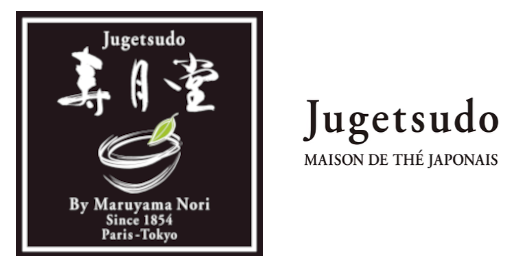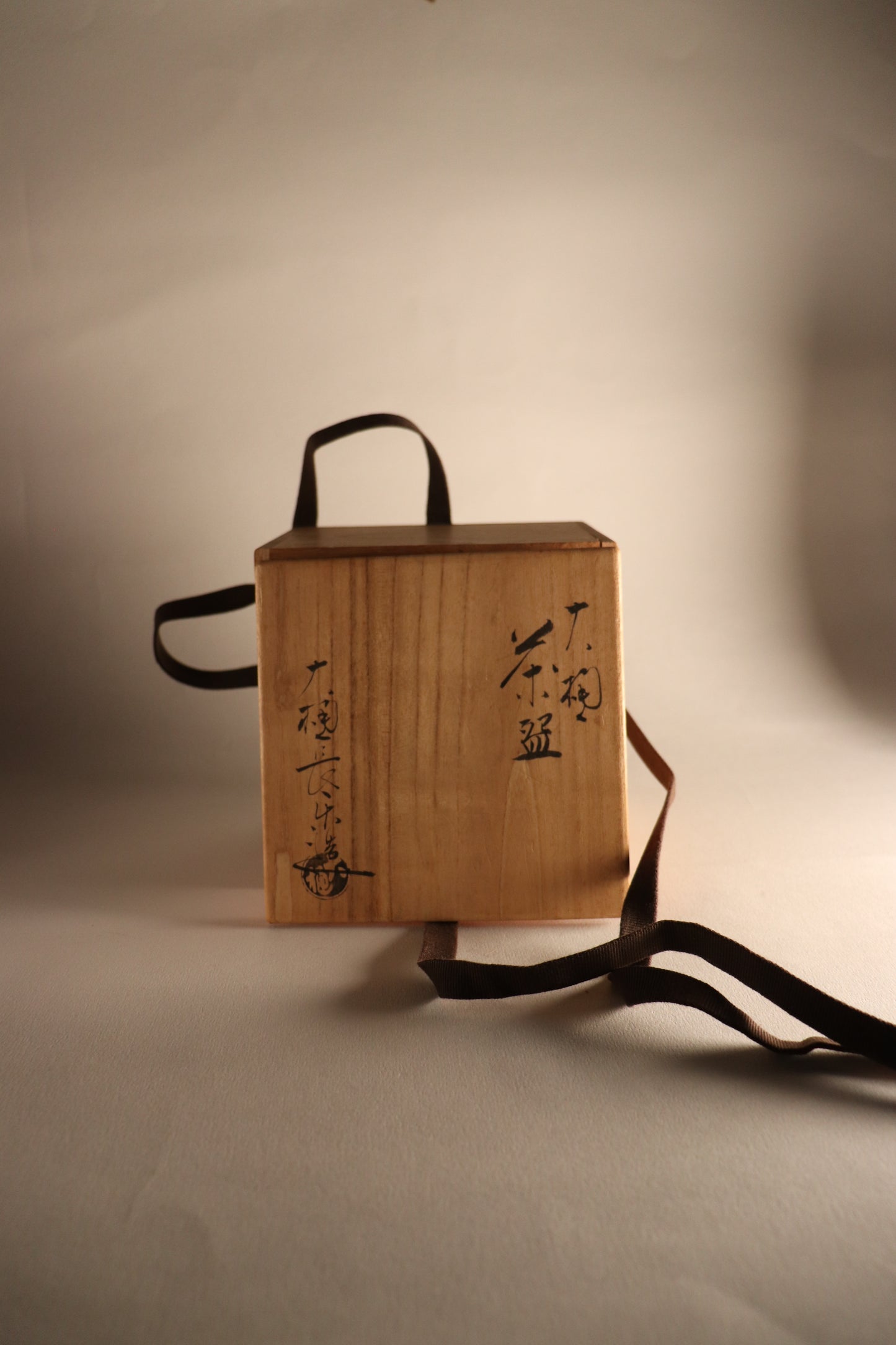Attention, cet article est une pièce unique.
Ce bol à matcha, à la chaude teinte ambrée, est une œuvre du maître potier Ōhi Chōraku (1889–1991), huitième génération de la lignée principale du four Ōhi de Kanazawa. Le Ōhi-yaki, considéré comme un four secondaire du Raku-yaki, fut fondé par Ōhi Chōzaemon I à la fin du XVIIe siècle, lorsque ce dernier s’installa à Kanazawa à l’invitation du seigneur Maeda Tsunanori. Héritier de cette tradition, Ōhi Chōraku — également connu sous le nom d’artiste Tōgensai — a consacré sa vie à perpétuer et affiner cette céramique intimement liée à la voie du thé.
La marque distinctive du Ōhi-yaki réside dans sa glaçure ambrée (ame-yū), un type de glaçure ferrugineuse obtenue par cuisson en atmosphère oxydante, donnant à la surface un brun profond et translucide que l’on appelle « couleur caramel » ou « couleur de miel ». Cette glaçure, douce et lumineuse, se marie à la texture tendre du Raku pour créer un contraste harmonieux entre chaleur visuelle et légèreté tactile. Chaque pièce, façonnée à la main sans tour, exprime la spontanéité du geste et la profondeur du feu.
L’histoire de la lignée Ōhi est singulière. Après sept générations continues, la descendance directe s’interrompt temporairement à la fin du XIXe siècle. La lignée fut d’abord poursuivie par un élève du four, qui prit le nom de huitième Ōhi Chōzaemon, avant d’être restaurée par les descendants directs du septième maître. C’est au sein de cette branche originelle que se distingue Ōhi Chōraku, huitième du nom dans la maison principale, qui redonna à l’atelier son éclat en conjuguant fidélité à la tradition et sensibilité contemporaine.
Ce bol illustre pleinement l’esthétique du Ōhi-yaki : une forme généreuse, modelée à la main avec souplesse, une glaçure d’un brun doré profond, et une atmosphère de sérénité propice à la dégustation du thé. Par sa texture douce et sa couleur réchauffée par la lumière, il évoque la beauté simple et apaisante du wabi-cha, l’art de trouver la perfection dans l’imperfection.
Matcha Bowl – Ōhi-yaki Amber Glaze
Ōhi Chōraku — Kanazawa
This matcha bowl, with its luminous amber tone, was created by Ōhi Chōraku (1889–1991), the eighth-generation master of the main Ōhi kiln in Kanazawa. The Ōhi-yaki tradition, a branch of the Raku lineage, originated with Ōhi Chōzaemon I, who established the kiln in Kanazawa in the late 17th century under the patronage of the Maeda clan. Known by his art name Tōgensai, Ōhi Chōraku carried forward this legacy with a refined sense of form and quiet intensity rooted in the tea ceremony.
Ōhi ware is best known for its amber glaze (ame-yū) — a type of iron-based glaze fired in an oxidizing atmosphere, producing warm, translucent hues ranging from honey to chestnut brown. This gentle, glossy surface harmonizes beautifully with the soft clay body typical of Raku, creating works that feel both earthy and luminous. Each bowl, shaped entirely by hand without a wheel, bears the living trace of the artist’s touch and the unpredictable breath of the kiln.
The Ōhi lineage has a complex history. After seven successive generations, the direct family line briefly ceased in the late Meiji era. The kiln was first continued by a disciple who took the name of the eighth Ōhi Chōzaemon, before being revived by the true descendants of the seventh master. Among them, Ōhi Chōraku, eighth of the main family line, restored the prestige of the Ōhi kiln, blending strict tradition with a poetic modern sensibility.
This bowl captures the essence of Ōhi-yaki: a softly rounded form, a glowing amber glaze, and a presence that invites stillness. Its tactile warmth and subtle brilliance embody the spirit of wabi-cha — the appreciation of simplicity, impermanence, and quiet beauty.




















